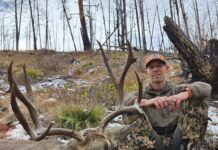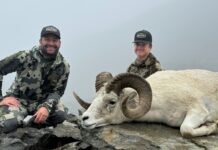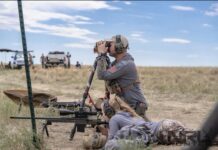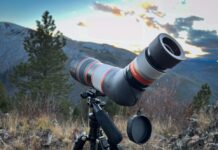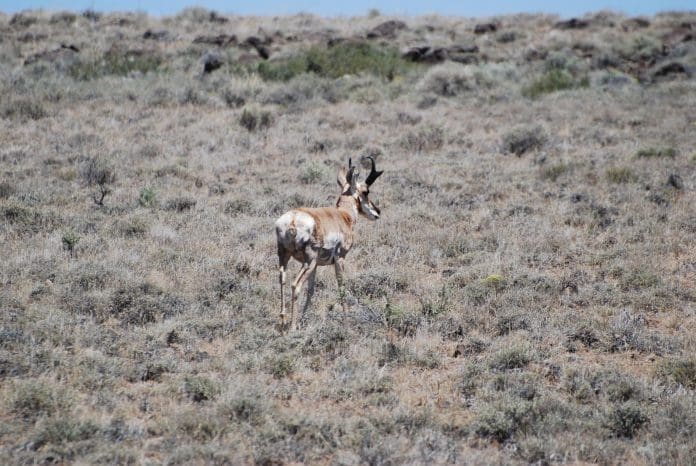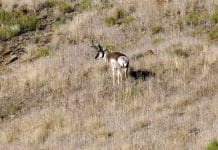Understand Antelope Territorial Behavior for Success
Guest Contributor – Scott Reekers
August 15th in Wyoming isn’t typically a celebrated opening day, but for the lucky ones who have an Antelope tag, it signals the start of archery season. For hunters that take advantage of every weapon and want to hold out for a good one, it’s a great time to learn the habits of individual bucks. Pre-rut bucks separate themselves from their competition and start to lay out the territory where they intend to keep their does in mid-August. Finding this territory in areas where water is readily available is a key element to harvesting a great buck since water won’t be the limiting factor in their routine.
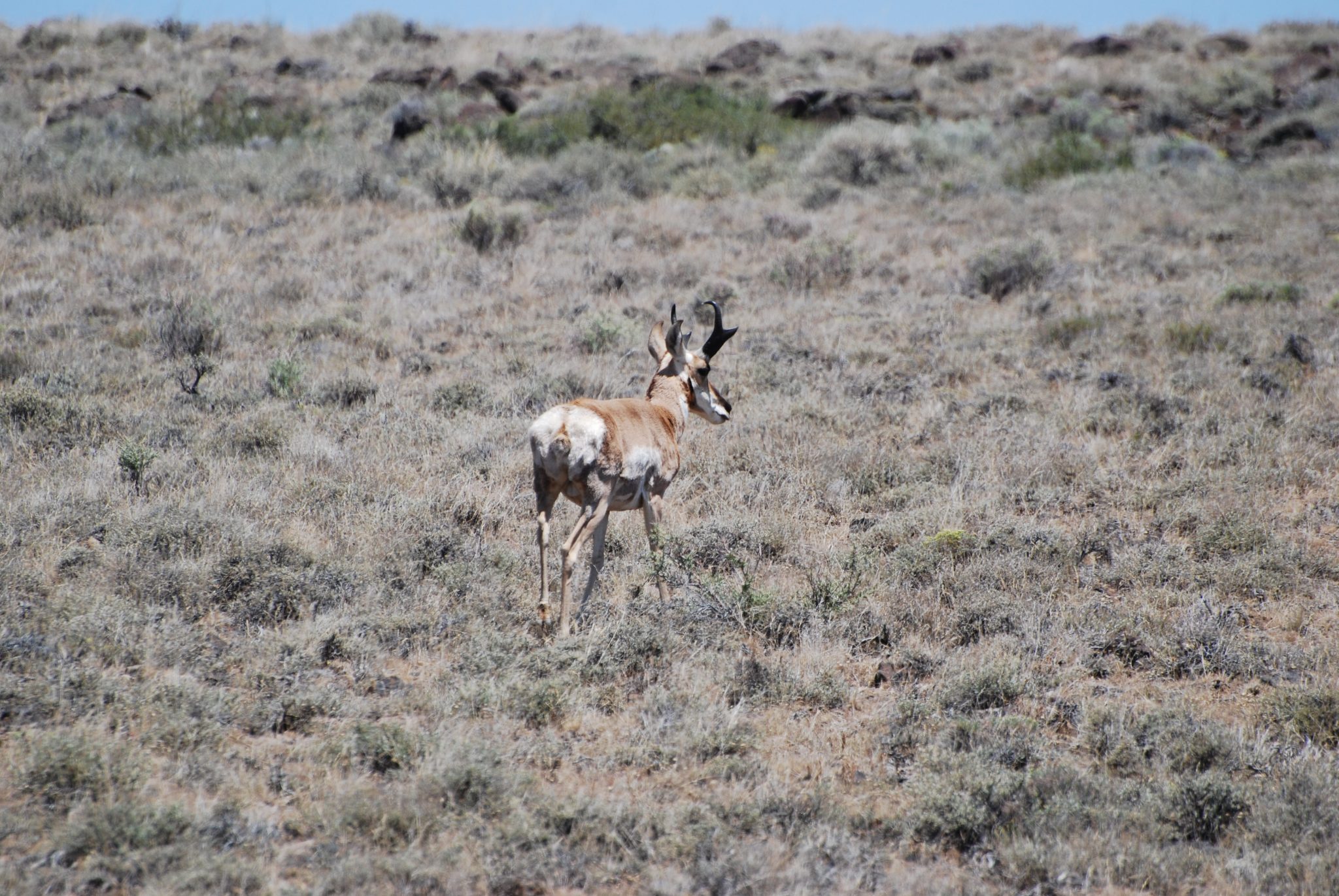
Antelope are very territorial during September and throughout most October rifle seasons. They expend a lot of energy establishing territorial boundaries during the August/September bow season. Figuring out these boundaries can increase your chances for success on a trophy buck. This is because mature bucks will often travel the boundary areas to mark their territory and confront intruders throughout the rut and post-rut time periods.
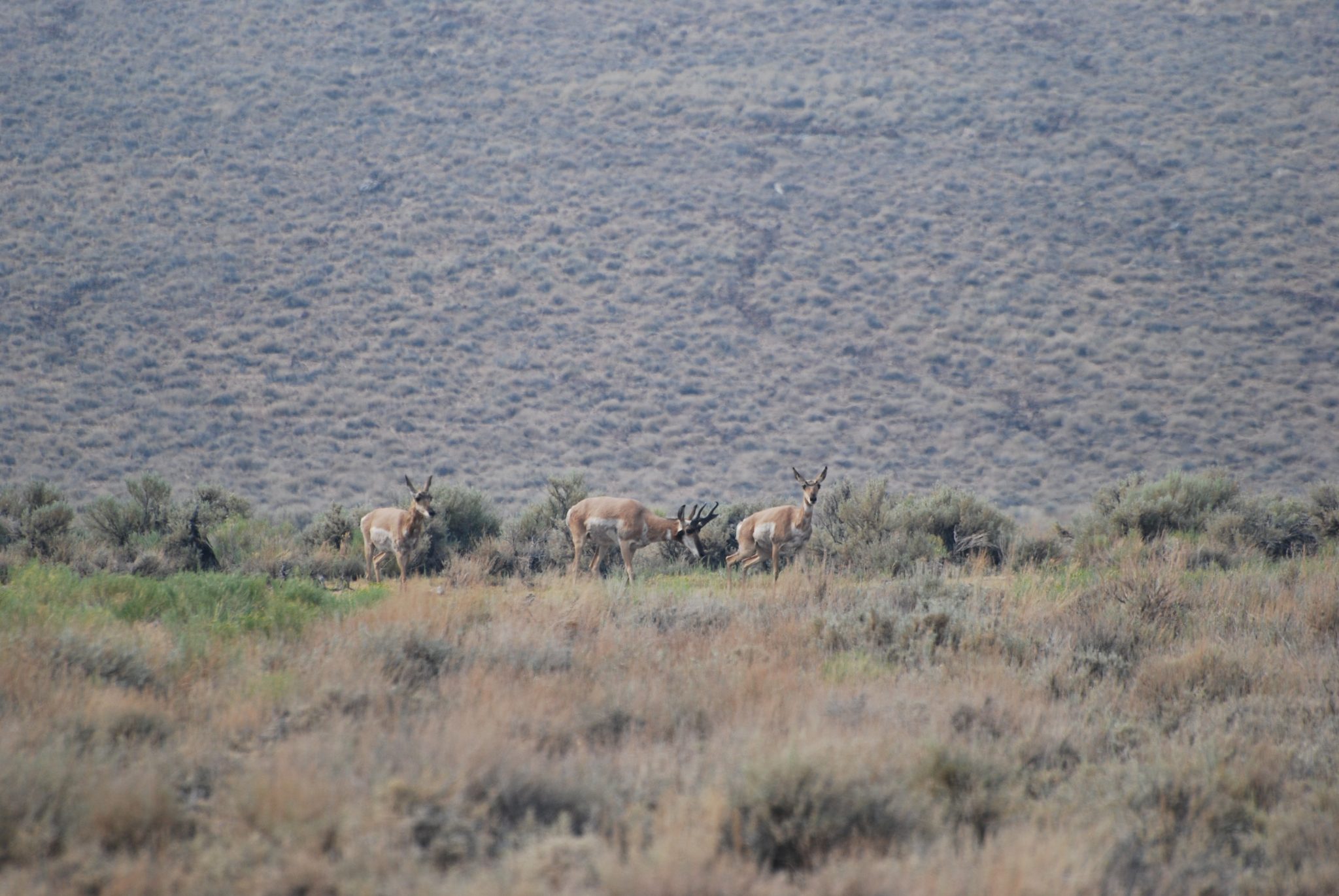
Many hunters overlook the territorial aspect of antelope, but mature antelope bucks are likely to return to an area even if bumped or shot at. My year to learn this lesson was back in 2007. My hunting partner and I approached a really tall buck with bow in hand, crouched behind a Montana Decoy. The ever present prairie-wind was blowing perfectly in our faces. The buck was bedded on a sage-covered hill with his back to us. He was only checking on this small, funny looking challenger crossing the sage every few minutes. He didn’t seem too concerned in spite of our ridiculous appearance with a bow limb sticking out beyond the decoy or the occasional extra head looking over the top. We quickly realized that two guys behind one dinky decoy wouldn’t double our odds of success. We were already beyond the point of no return so we continued the clumsy stalk.
What we didn’t know as we stalked in was that the buck was bedded on the edge of his territory making sure there were no intruders coming from the south. I’ve since come to realize that dominant bucks like to find the high points in their range and will often key in on a hill that allows them to see their most likely challengers. We weren’t perceived as a threat until the wind changed and our stalk attempt was immediately foiled. Yes, antelope do have a decent nose and they will react to your scent – especially if they can’t see you.
Since he didn’t have any does to defend and we (our Montana Decoy) didn’t have any to steal, he decided not to fight a small buck that smelled like humans. Instead of taking off straight away from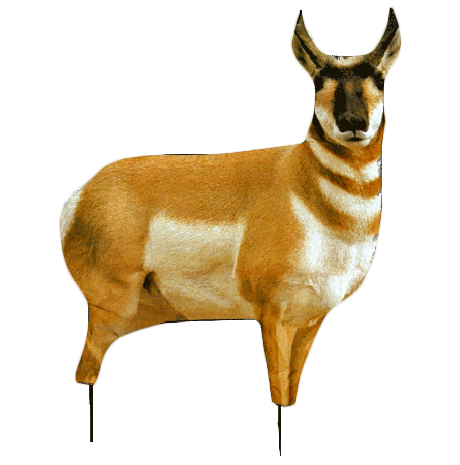 us, he trotted at a right angle to our position. The only logical explanation we could make was that the buck was bedded at the border of his territory. Rather than trespass on another buck’s territory to the south, he escaped to the west where he could disappear in his home territory.
us, he trotted at a right angle to our position. The only logical explanation we could make was that the buck was bedded at the border of his territory. Rather than trespass on another buck’s territory to the south, he escaped to the west where he could disappear in his home territory.
The second best buck I hunted that season traveled predictably between a small patch of public land, and a long strip of private. His territory covered both, which led me to think that I could probably ambush him during his travels with a blind and decoy. I set up on him but he repeatedly hung up just out of range before moving off. I never got a shot at the buck, but the effort enabled me to better pattern his travel habits for later.
Stacking the deck…
Although I didn’t get a buck with my bow, I learned a lot about bowhunting antelope bucks and even more about their habits and territories. The bowhunt was a perfect way to get “warmed-up” since both my tags were also good for rifle season. My father had also drawn a tag for the area and I was looking forward to spending some quality time rifle hunting together. We hoped to relocate the best bucks I found in the bow season and serve up some long range revenge. My confidence was pretty high going into the hunt. I knew that hunting with a rifle and using the scouting information I had gathered would stack the odds of success heavily in our favor.
Dad and I took off for the unit and made our way to the area where the biggest buck from the bowhunt was living. It turned out to be a miserable day on the prairie – Mother Nature served up some of Wyoming’s finest wind-driven rain at daybreak. I first questioned our sanity, but found a silver-lining in the fact that hunting pressure was unusually light for opening day.
In order to keep the wind in our favor we needed to approach from the east side of the big buck’s range. We had hiked less than a half mile from the truck when the big buck from archery season suddenly stood up from the sage! He didn’t waste any time putting some distance between us, but I made a good off-hand shot that struck him high in his back. We didn’t expect him to go far before lying down, but we soon learned that antelope can cover a lot of ground in a short amount of time! The buck disappeared over a hill but within a few minutes we were locked onto his tracks in the wet sand. We took out after the deep tracks reassured by the occasional confirmation of a blood-spot. We followed the sign to the hill on his southern border where I spooked him during the bowhunt. Sure enough, he made an abrupt right and headed west. Even wounded, he recognized and obeyed his territorial boundary.
The blood was becoming sparse and the spacing in his tracks narrowed dramatically. I could tell the buck had slowed and was preparing to bed down. We cautiously and deliberately followed the trail with one eye on any brush large enough to conceal a jackrabbit. I finally spotted the buck just as he burst from the sage. I squeezed off one more quick shot and the big buck was down for good within sight of the knob where I had first encountered him with the decoy.
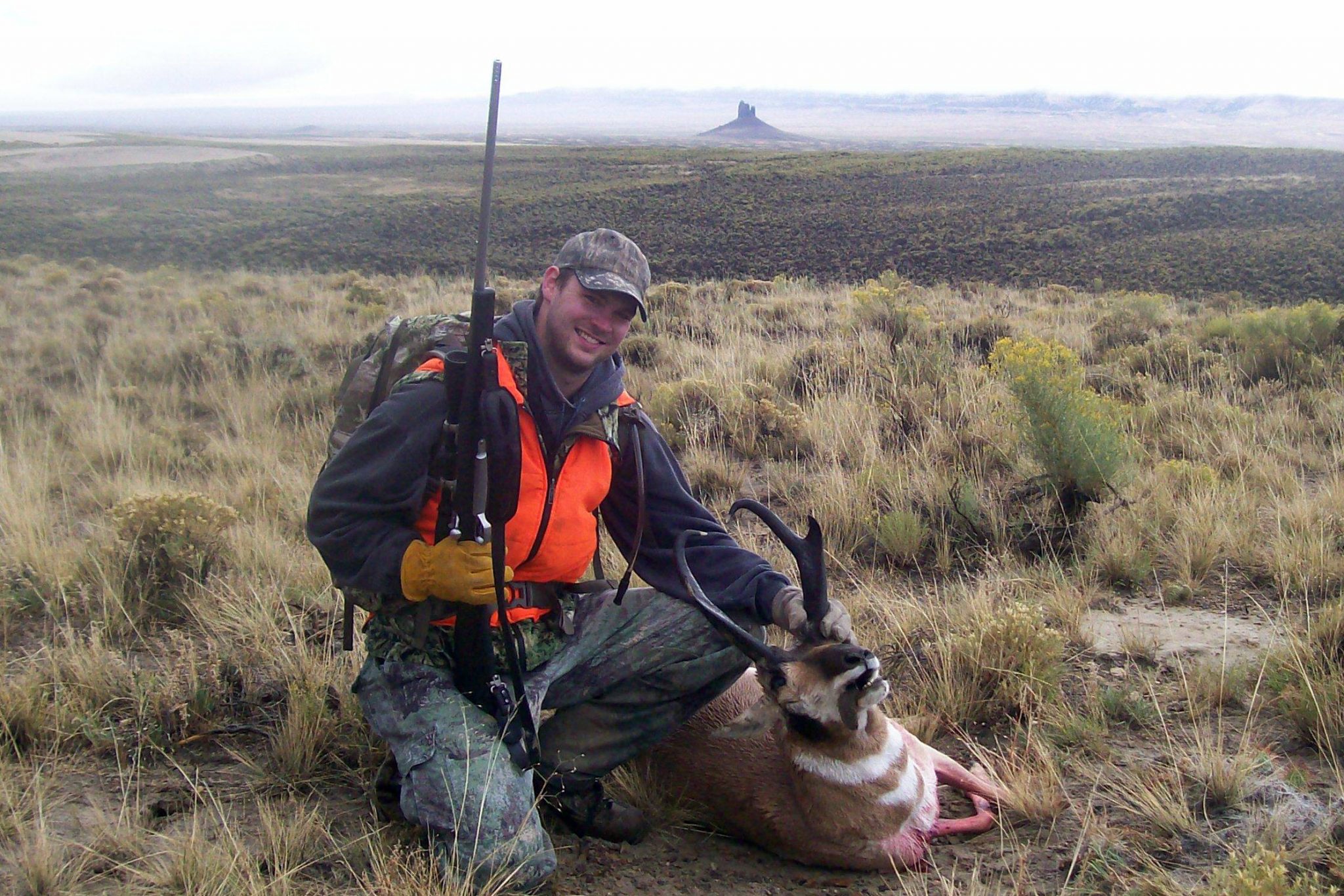
One down – one to go:
The second best buck that I found during bow season didn’t have nearly the height of the first, but he had nice cutters that swept outward creating a wide and unique appearance to his horns. I knew either one of us would be happy to take him if we got a chance. On our first morning hunting this buck I found him on a piece of private land I had seen him use in August. We didn’t have permission to hunt him there so we decided to move on to a distant location where we could survey the country and keep an eye on him while we waited for the buck to make his typical rounds onto the public section.
Like clockwork, he started to move his does onto the public when another buck got too close for the big buck to tolerate. It was obvious there would be a confrontation so I quickly moved to a better position to intercept him on his way to battle the intruder. The plan worked out perfect as the buck did exactly as we suspected. Two more well placed shots signaled the perfect end to my 2 for 2 season.
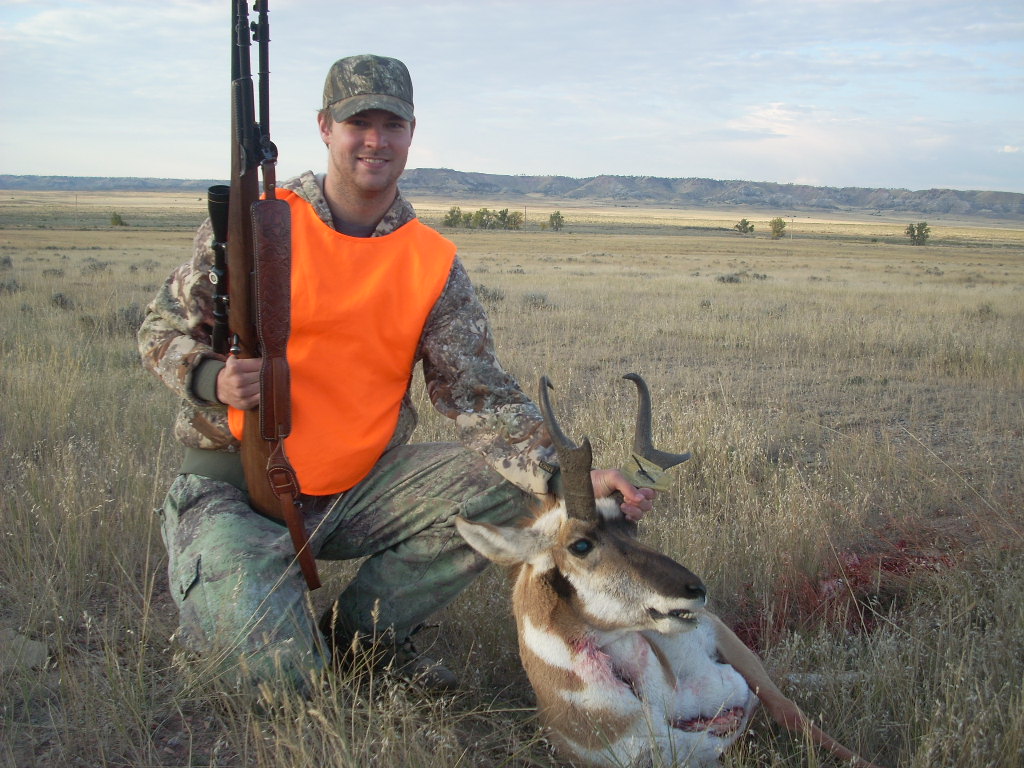
Both of these hunts were successful in large part because I patterned the bucks in August and understood their territorial boundaries and habits. While I would have loved to have taken either buck with my bow, the time I spent hunting and scouting during archery season paid off in spades for me when I hit the desert with my rifle.


